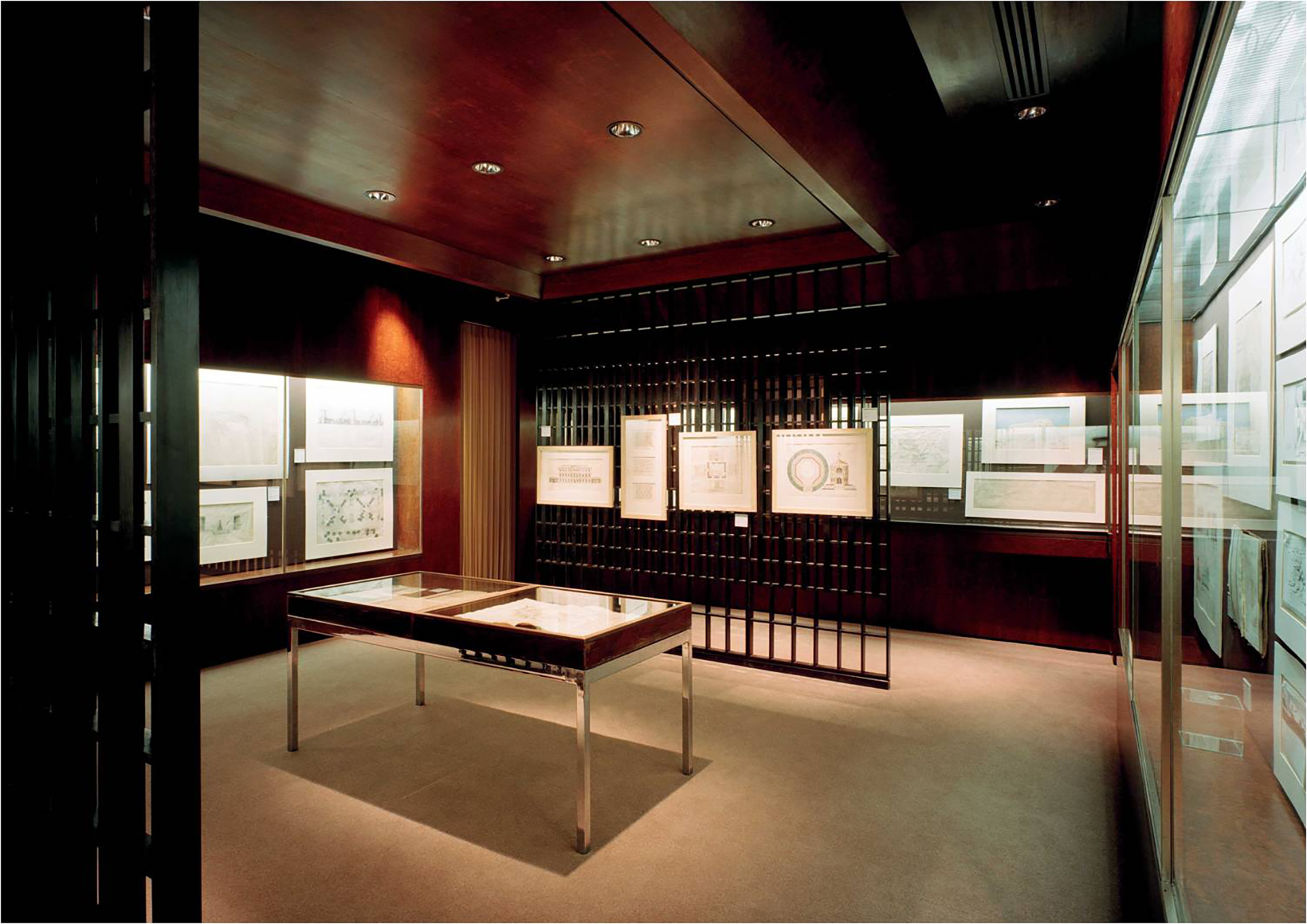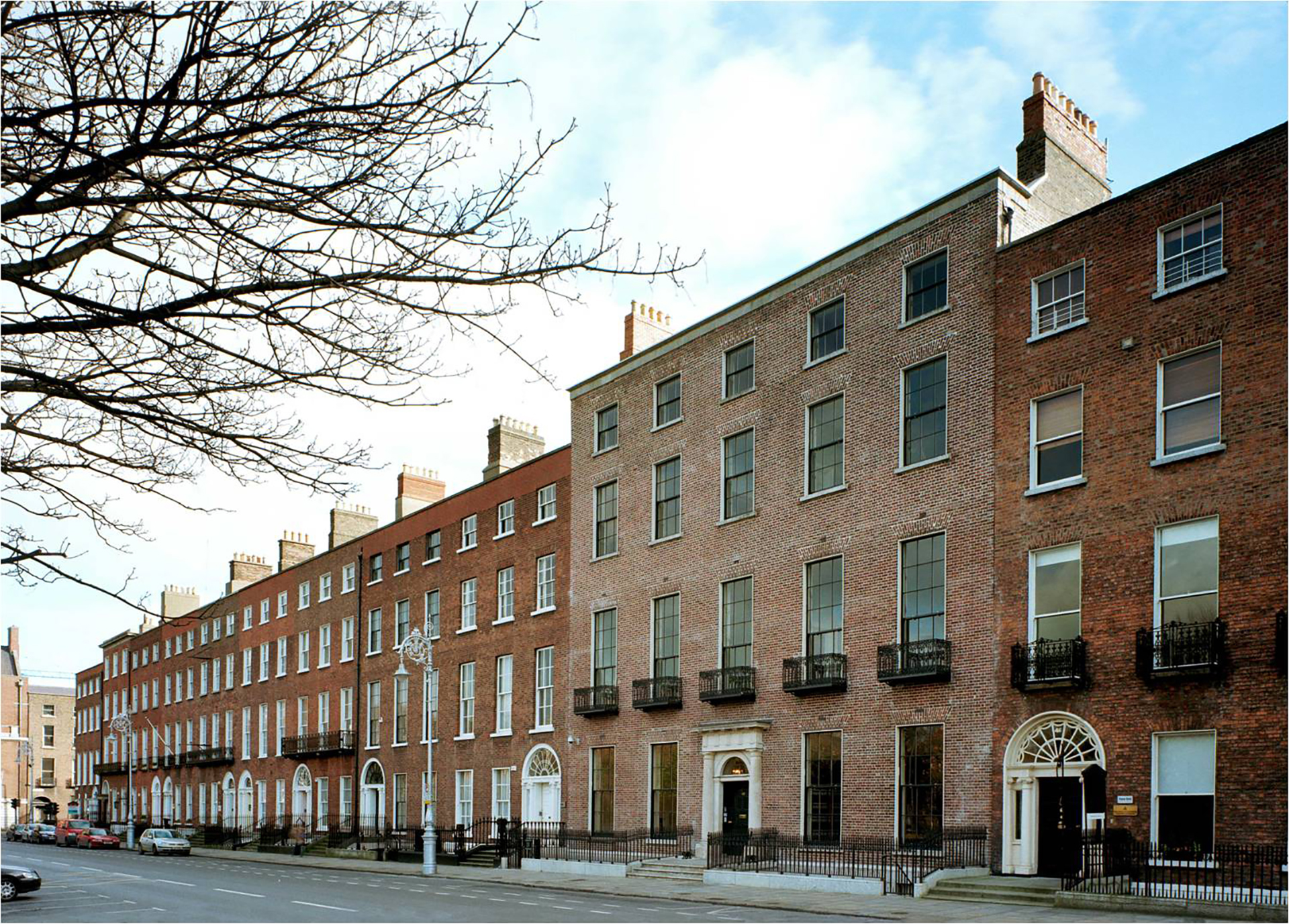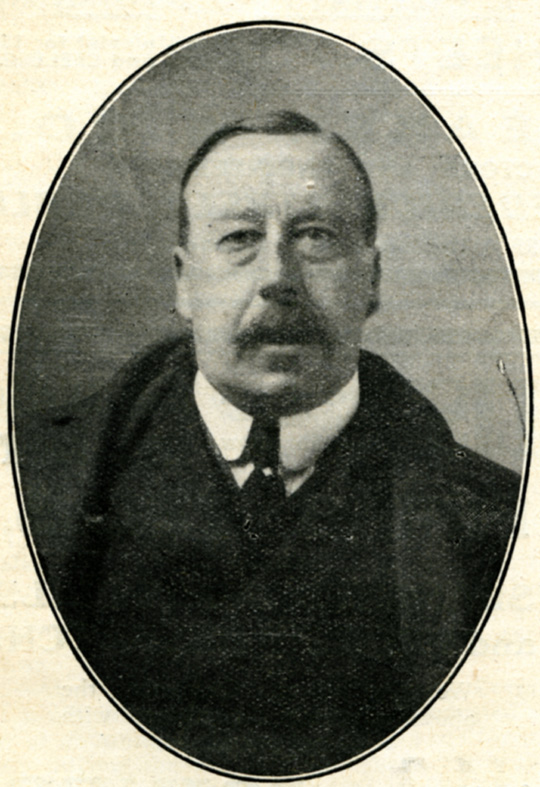
The architectural practice of McDonnell and Dixon was formed in 1917 by Laurence Aloysius McDonnell and William A. Dixon and based at 20 Ely Place, Dublin. Both men were born in Dublin. McDonnell served his articles with J.J. O’Callaghan, while Dixon was trained by McDonnell before becoming his partner. The practice still continues today at the same address.
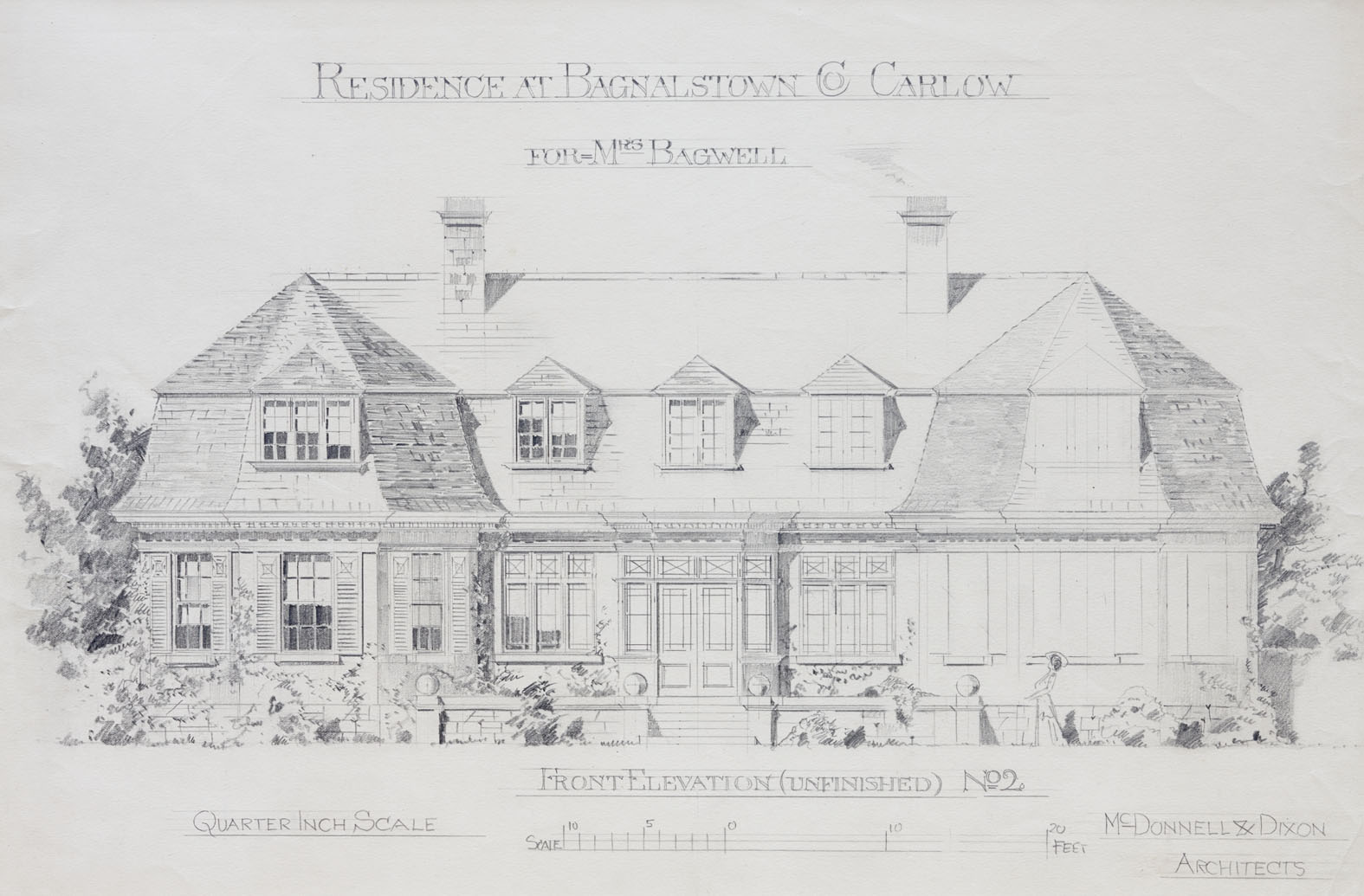
This residence for Mrs Bagwell is a charming Arts and Crafts influenced two-storey house in a style which might best be described as early twentieth-century British colonial. A flight of steps leads to a small terrace, demarcated by ball finials. The centrally placed entrance has large tripartite windows on either side and is surmounted by a substantial cornice which runs the width of the building and visually supports the slated mansard roof. The façade is completed by projecting bays at either end of the house, each with three sash windows embellished with shutters. At first floor level the roof is punctuated by dormer casement windows and surmounted by two fine stone chimneys. Despite the number of different window types, the façade reads as a coherent and satisfying whole.
This is one of two elevations in the same hand – that of Laurence McDonnell – for a house for a Mrs Bagwell. The alternative scheme has a full-height first floor rather than a mansard roof.
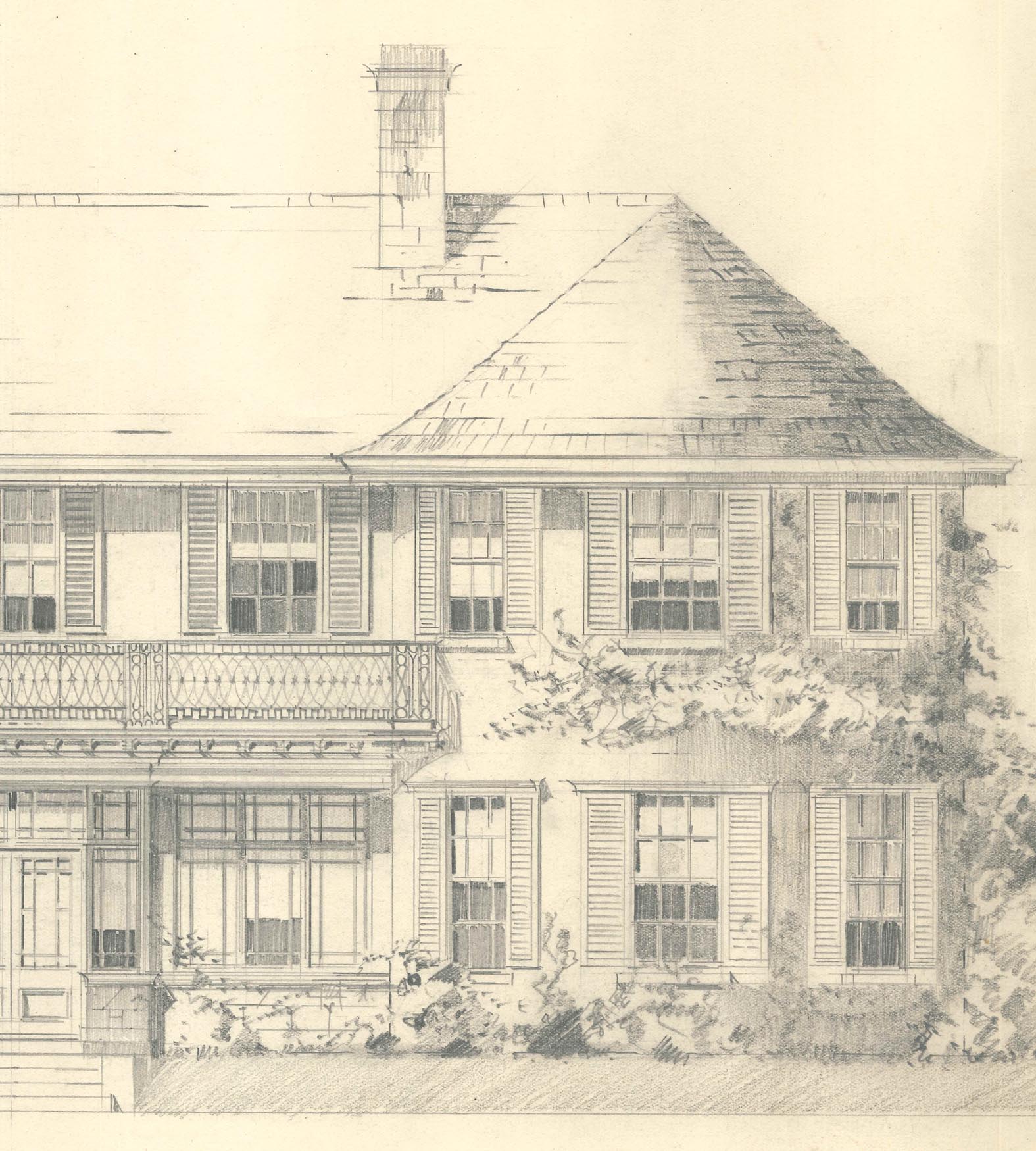
The drawing is unfinished but includes the lone figure of a woman in a long skirt, a portrait perhaps of the otherwise yet-to-be-identified Mrs Bagwell. Unfortunately it has not been possible to identify the house or to say if either this, or the alternative scheme, was ever actually built.
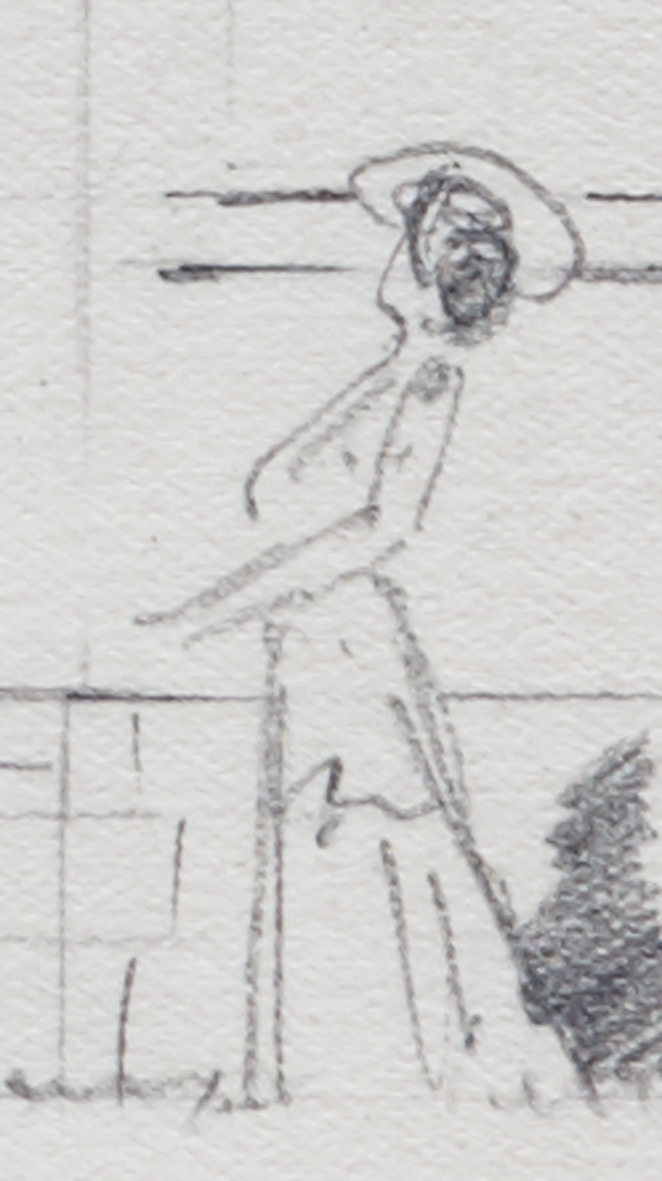
Simon Lincoln
IAA
